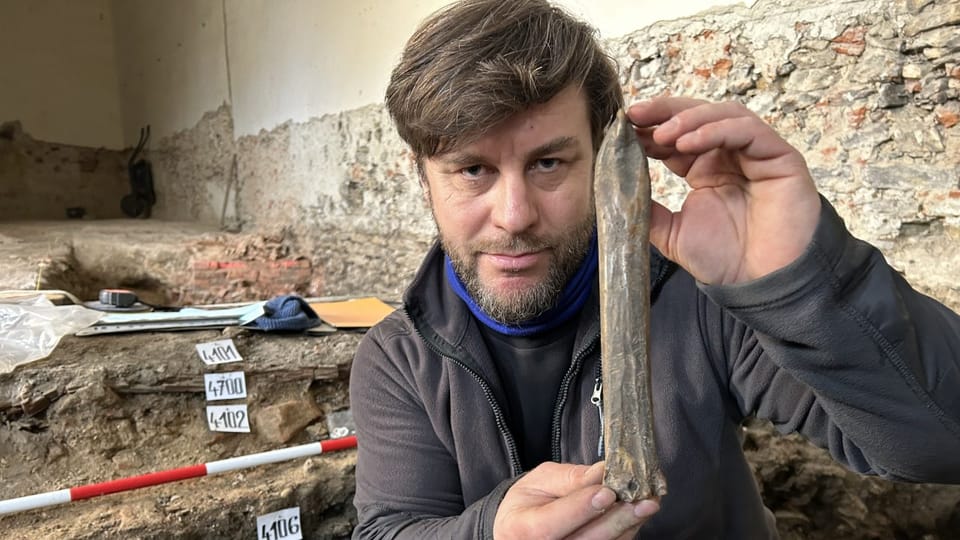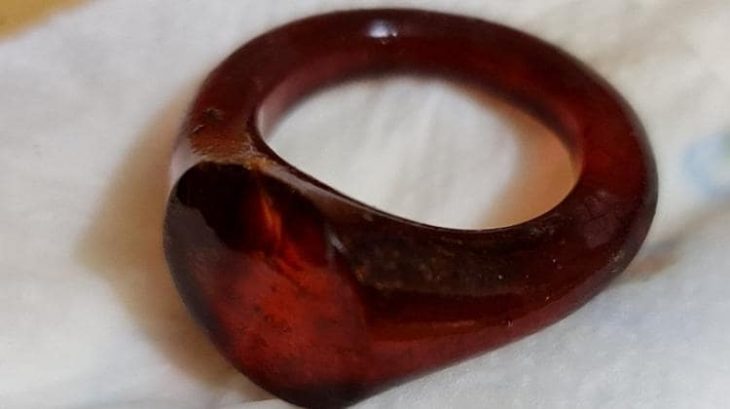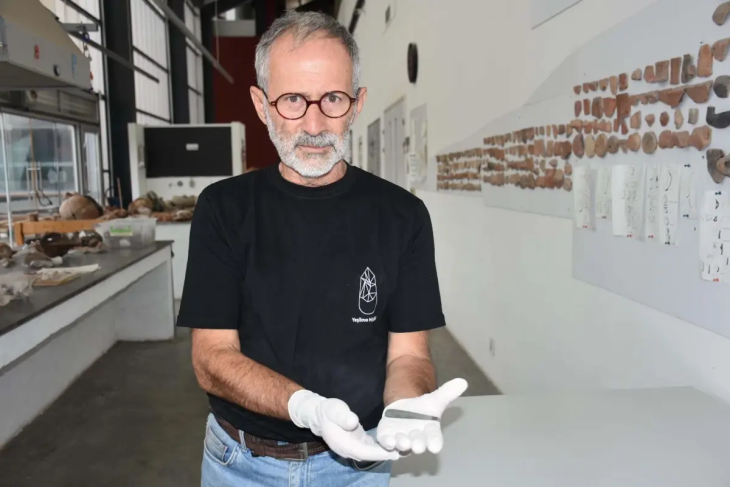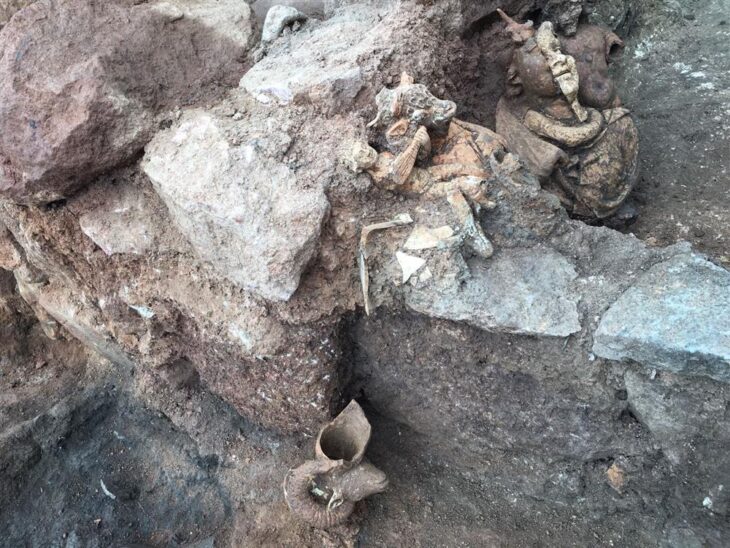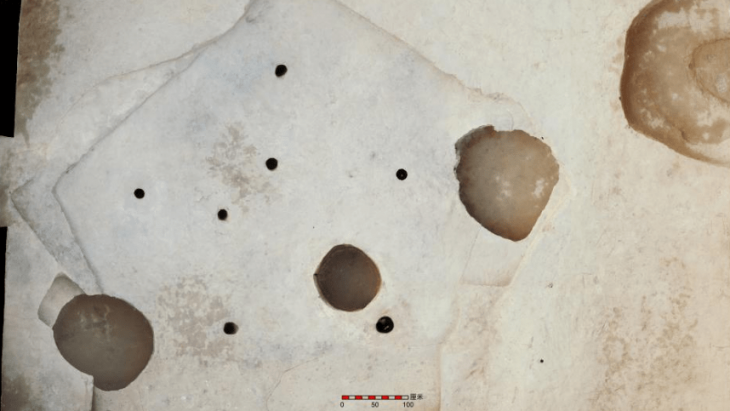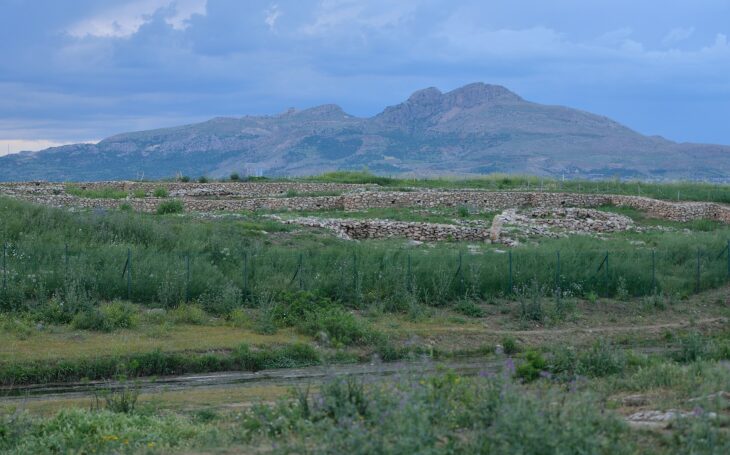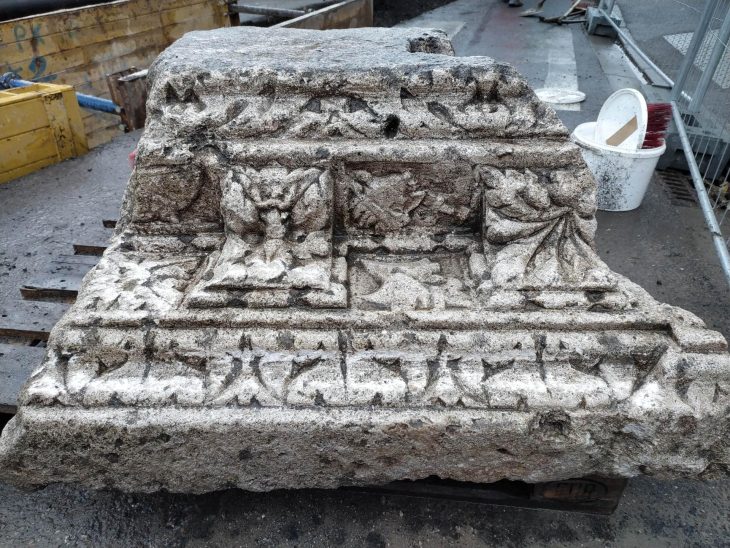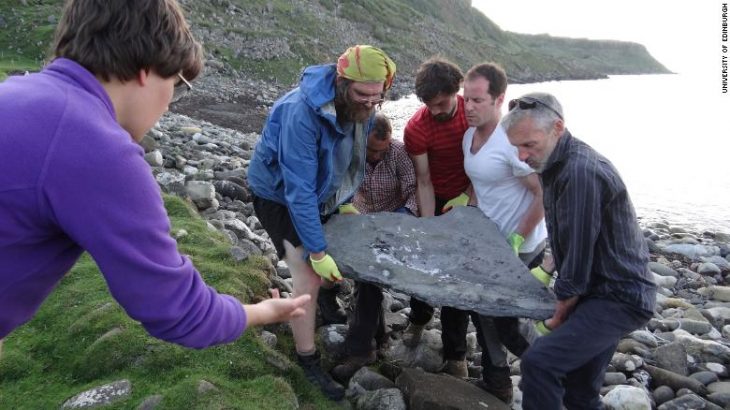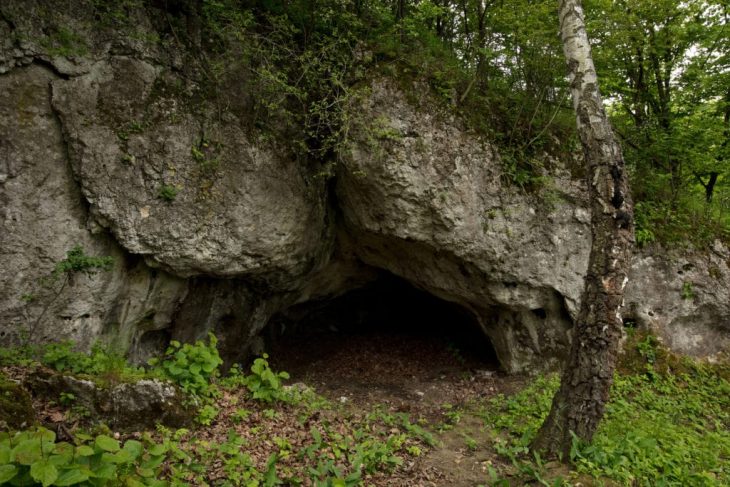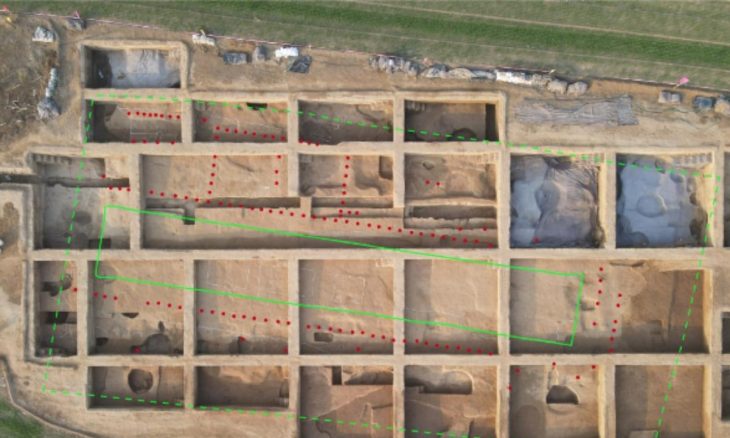Archaeologists from the central Moravian city of Přerov, Czech Republic have announced a unique discovery. While carrying out excavations in the center of the town, they found an ice skate made of animal bone dating back some 1,000 years.
In Přerov, a town on the River Bečva, specialists from the Comenius Museum have been conducting rescue excavations in the basement of a home on the Upper Square of the city.
The skate was made of animal bone, likely the metacarpal (shin bone) of a horse. Fragments of pottery found around the blade date it to the 10th or 11th century.
This find, offers a rare glimpse into the ingenuity and daily life of early medieval societies.
Archaeologist Zdeněk Schenk says it was most likely made of horse shin bone: “The object has a specific shape. On one side, it is curved into a tip which has a hole drilled in it and there is another hole at the back. They were used to thread a strap through, which was used to attach the skate to a shoe or to a wooden sledge.”
📣 Our WhatsApp channel is now LIVE! Stay up-to-date with the latest news and updates, just click here to follow us on WhatsApp and never miss a thing!!
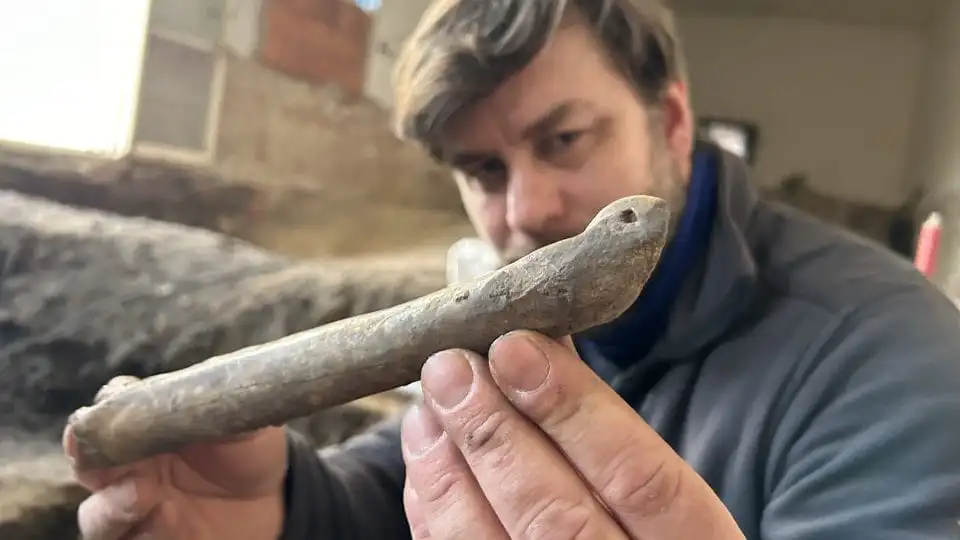
Unlike their modern counterparts used for recreation, these ancient blades served a more practical purpose, explains Schenk. “People back then wouldn’t have used them for leisure skating,” he clarifies. “Instead, they’d shuffle across frozen surfaces with the aid of sticks, or even attach them to sleds for transporting goods over ice.”
The bone blade is not the first such object found in Přerov. A similar find was made there in 2009 and more such blades have been unearthed over the years in the wider area of the city. Zdeněk Schenk says this is probably due to its location: “The Upper Square sits on a hill overlooking the Bečva River,” he explains. “In those times, settlements clustered along the river’s branches, making winter travel on the frozen water a necessity.”
Schenk emphasizes that Přerov isn’t alone in these discoveries. “Similar ‘ice skates’ made from cattle or horse bones have been found across Europe, particularly in Central and northwestern regions like Scandinavia. Interestingly, many of these finds date to the 10th century and often appear in Viking settlements.”
The thousand-year-old skate discovered by archaeologists in Přerov will soon be shown to the public. The bone skate will go on display at the Comenius Museum in Přerov Castle.
Cover Photo: Lenka Kratochvílová, Czech Radio

